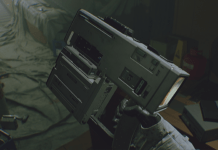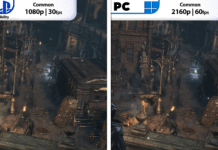<a href="/category/games/">Games<span class="Nav__brand--gb-highlight">Beat</span></a> <br><em>Did you miss a session from GamesBeat's latest event? Head over to the GamesBeat & Facebook Gaming Summit & GamesBeat Summit: Into the Metaverse 2 On Demand page <a href="https://venturebeat.com/event/gbfbsummit2022/on-demand/#/?utm_source=vb&utm_medium=boiler&utm_content=ondemand&utm_campaign=BoilerPlates">here</a>.</em><br><br><a href="https://venturebeat.com/2020/04/15/bunch-social-app-sees-surge-of-usage-as-people-play-games-remotely-together/" target="_blank" rel="noreferrer noopener">Bunch</a> has pivoted from a social layer for games to a more expansive metaverse that aims to keep players coming back for longer times and to engage in commerce and more activities.<br>Bunch will still do the basic functions of enabling players to play games with each other and stay connected as they jump from one game to another. In this way, Bunch is a kind of lightweight metaverse, one where you can now interact with people using animated avatars as opposed to only talking to people in video chat.<br>New York-based <a href="https://venturebeat.com/2020/09/17/bunch-raises-20-million-to-help-friends-party-up-in-mobile-games/" target="_blank" rel="noreferrer noopener">Bunch</a> started with the video chat model in late 2017 as a real-time social network where people could gather to engage in multiplayer gaming experiences. Selcuk Atli and cofounders Jason Liang and Jordan Howlett wanted to re-create the fun they had playing games in-person at LAN parties, where a bunch of friends would congregate in one group and play a bunch of different games together.<br>Atli, CEO of Bunch, said in an interview with GamesBeat that the vision was to bring people together when they were physically apart, and that was very timely with the onset of the pandemic. During the lockdown, the audience grew from thousands to millions. <br>Three top investment pros open up about what it takes to get your video game funded.<br>And now that has evolved into connecting people in a <a href="https://venturebeat.com/2020/05/05/just-how-close-are-we-to-achieving-the-metaverse/" target="_blank" rel="noreferrer noopener">metaverse</a>, the universe of virtual worlds that are all interconnected, like in novels such as <em><a href="https://venturebeat.com/2019/12/21/snow-crash-inspired-the-metaverse-and-now-its-becoming-an-hbo-show/" target="_blank" rel="noreferrer noopener">Snow Crash</a></em> and <em><a href="https://venturebeat.com/2018/03/28/ready-player-one-film-review-not-bad-for-a-spielberg-film-with-a-lot-of-new-licenses/" target="_blank" rel="noreferrer noopener">Ready Player One</a></em>. Bunch has more than 100,000 daily active users. The plan is to launch a beta test for Bunch 2.0 in the second quarter. That’s small compared to something like Roblox, the user-generated gaming world with nearly 50 million daily active users.<br>But Bunch has helped millions of people stay connected with friends and family through video chat while playing games. The app continues to rank at the top in most countries for searches like “group video chat.” The company <a href="https://venturebeat.com/2020/09/17/bunch-raises-20-million-to-help-friends-party-up-in-mobile-games/" target="_blank" rel="noreferrer noopener">raised $20 million</a> in 2020 in a round with participation from game companies including Supercell, Electronic Arts, Take-Two Interactive, Miniclip, and Ubisoft. <br>Atli said many users start Bunch parties that go on for hours, where they come in and out with their friends as they do homework, play games like Roblox and just hang out together?–?when they are physically apart. <br>“Our application grew quite a lot through the pandemic. And like when [Epic Games shut] House Party down, a lot of the users who loved that experience migrated over to our experience,” said Atli. “But while our app has been growing so people can engage in video chat with friends, we basically went heads down and started building Bunch 2.0 over the past year.”<br>This might be a good time to say how Bunch sees the metaverse. Many view technologies like augmented reality, virtual reality, and blockchain as the building blocks of the metaverse. But Bunch’s view is that the metaverse will bring digital spaces and the people in them together, and then move people from experience to experience, crossing application, company, and platform walls. <br>And based on that view, the metaverse is already here, Atli said. Sort of.<br>Millions of players spend time with friends in digital worlds like Roblox and Minecraft every day. These applications offer experiences that are made for and contained within these platforms. For example, players can meet up on Roblox and move from Roblox game to Roblox game. But they can’t meet on Roblox and play Fortnite or Minecraft.<br>Based on Bunch’s definition, popular chat applications like Discord and Bunch, where players party up and move between external experiences like Roblox and Minecraft, can also be considered metaverse applications, too. However, while these are examples of open-ended metaverse applications, they are non-spatial. That is, shared presence between players happen in the form of text, voice and video chat — instead of a game-like environment, Atli said.<br>Lastly, metaverse applications like The Sandbox and Decentraland form another category where they have decentralized economies. These applications use the blockchain to allow players to own their in-game assets where they can independently sell or trade these assets on open exchanges like OpenSea. <br>Another benefit of decentralized economies is extensible utility of blockchain assets. That is, applications can offer utility for blockchain assets that originated elsewhere. One example of this is Oncyber.io where players can connect their blockchain wallets to display NFTs they own in their personal space, Atli said.<br>With Bunch 2.0, you can create a house and have your own room. You can push a button, switch to a gamepad, and then jump into a favorite game. You can also do traditional video chat if you wish.<br>“We have the concept of spaces where you can meet with a larger number of people, and hang out with people that you’re not already friends with,” Atli said. “You can create spaces for your community or spaces for games or clans, and spatially connect with these people. And you can do things natively in this in this environment. But you can also jump into any external game.”<br>The company’s developer platform continues to function the same way as before. It basically brings party functionality and presence into other games. You can utilize blockchain technology in ways you can’t with something like Roblox. You can buy a digital item and, in contrast to something like iTunes, use that on multiple devices or take it from one experience to another. It’s not universal interoperability, but it is “extensible utility,” Atli said.<br>He added, “Blockchain in the metaverse is more similar to Facebook Connect, where you don’t need to get permission from a place like Facebook. So I own an asset and I go connect my wallet to another application. The application can decide to offer their own utility for the asset without asking for permission from the originator of that asset.”<br>In other words, it’s automatic. That’s the kind of extensible utility that blockchain provides.<br>Atli believes Bunch is uniquely positioned to deliver compelling value to players and developers alike, by creating an integrated metaverse for gaming that has a spatial environment, where players embody 3D avatars as they come together and explore digital spaces. It has open-ended experiences like on Discord where players can party up on bunch and move between their favorite games outside the app. And it has a decentralized economy where players own their in-game assets and it facilitates extensible utility.<br>That’s what the company has been building over the past year, and now it is launching it on an invite-only basis. Atli’s past view was that “games are the new social network.” Now he’ll have to modify that to say, “games are the new metaverse.”<br>Bunch has about 37 employees now, which represents pretty good growth since it had 20 in 2020. Atli said that the team built Bunch 2.0 to do the same thing as the original, but in a different way. <br>“It’s like Roblox meets Discord and utilizes the blockchain,” he said. <br>The thing about these metaverse applications is they aren’t spatial. The share space between players happens in the form of texture, voice chat, video chat. They’re not digital worlds where we walk around with 3D characters. <br>“But at the same time, the thing that’s cool about them is they’re open ended in terms of experience, or they’re not contained like Roblox,” Atli said. “You can meet on Discord and go play Minecraft or Among Us. It leads you to external experiences, and it’s open ended. And so basically what we’re building with Bunch 2.0.”<br>True interoperability may be years down the road.<br>“What we can do today is basically respond to the things that people own,” Atli said. <br>In the past, the company anchored the experience around video chat with your friends. But Atli is betting that it’s a lot more delightful if you can express yourself through avatars and met people that you’re not friends with in a more natural way.<br>“Video chat with strangers isn’t a really fun thing to do, but hanging out in the digital space of strangers, where you have your own avatar, and then you go move from game to game. That’s more fun,” Atli said.<br>As for nonfungible tokens (NFTs) that use the blockchain, some people like it and some people hate it, Atli acknowledged. We already see that with the reaction to gaming NFTs from Ubisoft, GSC Game World, and Team17.<br>The company will offer a decentralized economy that gives true ownership and extensible utility using blockchain.<br>“What I mean by true ownership is like, on Minecraft, or Roblox, or Fortnite, you buy a skin and that skin is basically a license from the developer to you. We’re going to have collectibles on Bunch that you can buy on the blockchain,” Atli said. “And you can basically, if you own it, you can go sell it on an open exchange. You can go and sell it to another person, and you don’t need our permission for that. So that’s like true ownership. The other thing it does is what we call extensible utility, right? We will let other metaverse applications give their own utility to assets that they buy from us. So, for example, when you buy a Bunch collectible avatar, you can go use it on another application if the application supports it. Or we will give our support to popular collections as well. If you own a Sandbox asset, we might decide to offer support for Sandbox avatars on Bunch.”<br>Atli thinks different groups of gamers will be happy to give it a try.<br>“We’re targeting a lot of people who don’t care about it,” he said. “We think it has utility, but we are not really putting all our eggs on the blockchain. We think if it works, it can be really powerful because people can own the things that they have. And that could be a cross-application interoperability and shared utility. We think that’s a really powerful thing.”<br>And if users don’t go for it, that’s not going to be a disaster. <br> “I wouldn’t say we are a blockchain company,” Atli said. “I would say we’re a metaverse company.”<br>With blockchain tech, no one can shut it down as the record is immutable. It’s more like a universal social login.<br>In a demo of the metaverse, you can visit your friends. You have to knock on the door before you can get in. You can listen to music, or play games on Bunch using a gamepad.<br>In the future, you can imagine agreements between two companies that give discounts to each other. But this can happen unilaterally as well. Say if a yacht club is next to a bar. If a member of the yacht club comes into the bar, the bar owner knows that person is a member of the yacht club, thanks to the avatar identity that says so. Then the bar owner can just give a discount to the yacht club member, without having to have an agreement in place with the yacht club owner. It’s an easier way to give people an incentive to cross from one world to another. <br>“It’s almost like a permissionless, interoperable internet,” Atli said. “We can start with these what we call bridges. So applications decide to give support to others’ assets. And over time, these bridges just like the World Wide Web. They can become open protocols. When CNN.com wants to put up a website, they don’t need permission from Firefox.”<br><strong>GamesBeat's creed</strong> when covering the game industry is "where passion meets business." What does this mean? We want to tell you how the news matters to you -- not just as a decision-maker at a game studio, but also as a fan of games. Whether you read our articles, listen to our podcasts, or watch our videos, GamesBeat will help you learn about the industry and enjoy engaging with it. <a href="https://venturebeat.com/gamesbeat-membership-plans/">Learn More</a><br>Head over to the on-demand library to view all the sessions from the online summit.<br> Head over to the on-demand library to watch sessions from the 2nd Annual GamesBeat and Facebook Gaming Summit and GamesBeat: Into the Metaverse 2 <br>© 2022 <a href="https://venturebeat.com/" class="Footer__legal">VentureBeat</a>. All rights reserved.<br>We may collect cookies and other personal information from your interaction with our website. For more information on the categories of personal information we collect and the purposes we use them for, please view our <a class="c_nac" onclick=shoCMP()> Notice at Collection.</a><br><br><a href="https://venturebeat.com/2022/02/09/bunch-2-0-pivots-to-a-social-gaming-metaverse/">source</a>
Relacionado












